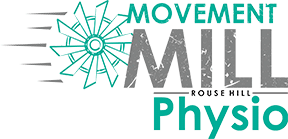Busting the Back Pain Myths: Separating Fact from Fiction
Back pain is a ubiquitous condition that affects people of all ages, backgrounds, and lifestyles. It’s no surprise that various beliefs and myths have emerged around this discomforting issue. However, not all that is commonly believed about back pain holds true. Let’s delve into ten prevailing myths about lower back pain (LBP) and set the record straight with evidence-based insights.
Myth 1: LBP is usually a serious medical condition.
One of the most common misconceptions is that all back pain indicates a severe underlying medical problem. While some instances might be related to more serious conditions, the majority of back pain cases are due to musculoskeletal issues that can be managed with proper care.
Myth 2: LBP will become persistent and deteriorate in later life.
Contrary to popular belief, not all cases of LBP become chronic or worsen over time. Many people experience temporary back pain that resolves with appropriate treatment and lifestyle adjustments.
Myth 3: Persistent LBP is always related to tissue damage.
The assumption that chronic back pain is solely caused by tissue damage oversimplifies the complex nature of LBP. Factors such as neural pathways, muscle imbalances, and even psychological factors can contribute to ongoing pain.
Myth 4: Scans are always needed to detect the cause of LBP.
While diagnostic scans can be useful in certain cases, they are not always necessary. In fact, relying solely on scans can sometimes lead to unnecessary interventions or surgeries.
Myth 5: Pain related to exercise and movement always signals harm to the spine.
Experiencing pain during exercise or movement doesn’t always mean damage is being done to the spine. In many cases, mild discomfort can be attributed to muscle soreness rather than structural damage.
Myth 6: LBP is caused by poor posture when sitting, standing, and lifting.
While maintaining good posture is one factor, it’s an oversimplification to claim that poor posture is the sole cause of LBP. Other factors like muscle strength, flexibility, and muscular endurance also play significant roles.
Myth 7: LBP is caused by weak ‘core’ muscles, and having a strong core prevents future LBP.
While having a strong core can be beneficial for spine support, attributing all LBP to weak core muscles neglects the complexity of the issue. Back pain can arise from various sources, and strengthening the core is just one aspect of a holistic approach to prevention and management.
Myth 8: Repeated spinal loading results in ‘wear and tear’ and tissue damage.
The idea that routine activities like lifting or bending cause unavoidable wear and tear on the spine is an oversimplification. The body is resilient and designed to handle a wide range of movements without incurring damage in every instance.
Myth 9: Pain flare-ups are a sign of tissue damage and require rest.
Pain flare-ups are not always indicative of tissue damage. They can be caused by various factors, including inflammation, muscle spasms, or changes in activity levels. Rest might not always be the best solution; sometimes, gentle movement and appropriate exercises can be more effective.
Myth 10: Treatments such as strong medications, injections, and surgery are always effective and necessary for treating LBP.
While these treatments might have their place in certain cases, they are not universally effective or necessary for all individuals with LBP. Non-invasive approaches like physical therapy, lifestyle modifications, and exercise often yield better long-term outcomes.
As we’ve seen, there are numerous myths surrounding lower back pain that can lead to unnecessary fear, over-medicalisation, and incorrect treatment approaches. It’s crucial to approach back pain with a well-rounded understanding, considering the various factors that contribute to its development and persistence. By debunking these myths and focusing on evidence-based practices, we can pave the way for more effective back pain management and prevention strategies.

